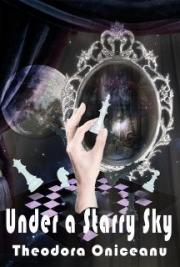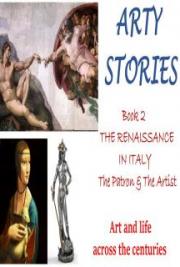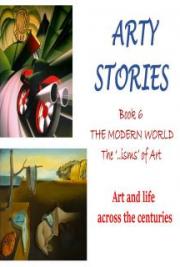'Psyche, a king's daughter, by her exceeding beauty
caused the people to forget Venus; therefore the goddess would fain have
destroyed her: nevertheless she became the bride of Love, yet in an unhappy
moment lost him by her own fault, and wandering through the world suffered many
evils at the hands of Venus, for whom she must
[237]
accomplish fearful tasks. But the gods and all nature
helped her, and in process of time she was re-united to Love, forgiven by
Venus, and made immortal by the Father of gods and men.'
Psyche is supposed to symbolize the human soul made
immortal through love.
NOTES ON THE ODE TO PSYCHE.
Page 117. l. 2. sweet . . . dear. Cf. Lycidas,
'Bitter constraint and sad occasion dear.'
l. 4. soft-conched. Metaphor of a
sea-shell giving an impression of exquisite colour and delicate form.
Page 118. l. 13. 'Mid . . . eyed. Nature
in its appeal to every sense. In this line we have the essence of all that
makes the beauty of flowers satisfying and comforting.
l. 14. Tyrian, purple, from a certain
dye made at Tyre.
l. 20. aurorean. Aurora is the goddess
of dawn. Cf. Hyperion, i. 181.
l. 25. Olympus. Cf. Lamia, i. 9,
note.
hierarchy. The orders of gods, with Jupiter as head.
l. 26. Phoebe, or Diana, goddess of the
moon.
l. 27. Vesper, the evening star.
Page 119. l. 34. oracle, a sacred place where the
god was supposed to answer questions of vital import asked him by his
worshippers.
l. 37. fond believing, foolishly
credulous.
l. 41. lucent fans, luminous wings.
Page 120. l. 55. fledge . . . steep.
Probably a recollection of what he had seen in the Lakes, for on June 29, 1818,
he writes to Tom from Keswick of a waterfall which 'oozes
[238]
out from a cleft in perpendicular Rocks, all fledged
with Ash and other beautiful trees'.
l. 57. Dryads. Cf. Lamia, l. 5, note.
INTRODUCTION TO FANCY.
This poem, although so much lighter in spirit, bears a
certain relation in thought to Keats's other odes. In the Nightingale
the tragedy of this life made him long to escape, on the wings of imagination,
to the ideal world of beauty symbolized by the song of the bird. Here finding
all real things, even the most beautiful, pall upon him, he extols the fancy,
which can escape from reality and is not tied by place or season in its search
for new joys. This is, of course, only a passing mood, as the extempore
character of the poetry indicates. We see more of settled conviction in the
deeply-meditative Ode to Autumn, where he finds the ideal in the rich
and ever-changing real.
This poem is written in the four-accent metre employed
by Milton in L'Allegro and Il Penseroso, and we can often detect
a similarity of cadence, and a resemblance in the scenes imagined.
NOTES ON FANCY.
Page 123. l. 16. ingle, chimney-nook.
Page 126. l. 81. Ceres' daughter, Proserpina. Cf. Lamia,
i. 63, note.
l. 82. God of torment. Pluto, who
presides over the torments of the souls in Hades.
Page 127. l. 85. Hebe, the cup-bearer of Jove.
l. 89. And Jove grew languid. Observe
the fitting slowness of the first half of the line, and the sudden leap forward
of the second.
[239]
NOTES ON ODE
['Bards of Passion and of Mirth'].
Page 128. l. 1. Bards, poets and singers.
l. 8. parle, French parler. Cf. Hamlet,
i. i. 62.
l. 12. Dian's fawns. Diana was the
goddess of hunting.
INTRODUCTION TO LINES ON THE MERMAID
TAVERN.
The Mermaid Tavern was an old inn in Bread Street,
Cheapside. Tradition says that the literary club there was established by Sir
Walter Raleigh in 1603. In any case it was, in Shakespeare's time, frequented
by the chief writers of the day, amongst them Ben Jonson, Beaumont, Fletcher,
Selden, Carew, Donne, and Shakespeare himself. Beaumont, in a poetical epistle
to Ben Jonson, writes:
What things have we
seen
Done at the Mermaid!
heard words that have been
So nimble and so full
of subtle flame,
As if that any one
from whence they came
Had meant to put his
whole wit in a jest,
And has resolved to
live a fool the rest
Of his dull life.
NOTES ON LINES ON THE MERMAID TAVERN.
Page 131. l. 10. bold Robin Hood. Cf. Robin
Hood, p. 133.
l. 12. bowse, drink.
Page 132. ll. 16-17. an astrologer's . . .
story. The astrologer would record, on parchment, what he had seen in the
heavens.
[240]
l. 22. The Mermaid . . . Zodiac.
The zodiac was an imaginary belt across the heavens within which the sun and
planets were supposed to move. It was divided into twelve parts corresponding
to the twelve months of the year, according to the position of the moon when
full. Each of these parts had a sign by which it was known, and the sign of the
tenth was a fish-tailed goat, to which Keats refers as the Mermaid. The word zodiac
comes from the Greek ζῴδιον, meaning a little
animal, since originally all the signs were animals.
INTRODUCTION TO ROBIN HOOD.
Early in 1818 John Hamilton Reynolds, a friend of
Keats, sent him two sonnets which he had written 'On Robin Hood'. Keats, in his
letter of thanks, after giving an appreciation of Reynolds's production, says:
'In return for your Dish of Filberts, I have gathered a few Catkins, I hope
they'll look pretty.' Then follow these lines, entitled, 'To J. H. R. in answer
to his Robin Hood sonnets.' At the end he writes: 'I hope you will like
them—they are at least written in the spirit of outlawry.'
Robin Hood, the outlaw, was a popular hero of the
Middle Ages. He was a great poacher of deer, brave, chivalrous, generous, full
of fun, and absolutely without respect for law and order. He robbed the rich to
give to the poor, and waged ceaseless war against the wealthy prelates of the
church. Indeed, of his endless practical jokes, the majority were played upon
sheriffs and bishops. He lived, with his 'merry men', in Sherwood Forest, where
a hollow tree, said to be his 'larder', is still shown.
[241]
Innumerable ballads telling of his exploits were
composed, the first reference to which is in the second edition of Langland's Piers
Plowman, c. 1377. Many of these ballads still survive, but in all these
traditions it is quite impossible to disentangle fact from fiction.
NOTES ON ROBIN HOOD.
Page 133. l. 4. pall. Cf. Isabella, l. 268.
l. 9. fleeces, the leaves of the
forest, cut from them by the wind as the wool is shorn from the sheep's back.
Page 134. l. 13. ivory shrill, the shrill sound of
the ivory horn.
ll. 15-18. Keats imagines some man who has not
heard the laugh hearing with bewilderment its echo in the depths of the forest.
l. 21. seven stars, Charles's Wain or
the Big Bear.
l. 22. polar ray, the light of the Pole,
or North, star.
l. 30. pasture Trent, the fields about
the Trent, the river of Nottingham, which runs by Sherwood forest.
Page 135. l. 33. morris. A dance in costume which,
in the Tudor period, formed a part of every village festivity. It was generally
danced by five men and a boy in girl's dress, who represented Maid Marian.
Later it came to be associated with the May games, and other characters of the
Robin Hood epic were introduced. It was abolished, with other village gaieties,
by the Puritans, and though at the Restoration it was revived it never regained
its former importance.
l. 34. Gamelyn. The hero of a tale (The
Tale of Gamelyn) attributed to Chaucer, and given in some MSS. as The
Cook's Tale in The Canterbury Tales. The
[242]
story of Orlando's ill-usage, prowess, and banishment,
in As You Like It, Shakespeare derived from this source, and Keats is
thinking of the merry life of the hero amongst the outlaws.
l. 36. 'grenè shawe,' green wood.
Page 136. l. 53. Lincoln green. In the Middle Ages
Lincoln was very famous for dyeing green cloth, and this green cloth was the
characteristic garb of the forester and outlaw.
l. 62. burden. Cf. Isabella, l. 503.
NOTES ON 'TO AUTUMN'.
In a letter written to Reynolds from Winchester, in
September, 1819, Keats says: 'How beautiful the season is now—How fine the air.
A temperate sharpness about it. Really, without joking, chaste weather—Dian
skies—I never liked stubble-fields so much as now—Aye better than the chilly
green of the spring. Somehow, a stubble-field looks warm—in the same way that
some pictures look warm. This struck me so much in my Sunday's walk that I
composed upon it.' What he composed was the Ode To Autumn.
Page 137. ll. 1 seq. The extraordinary concentration and
richness of this description reminds us of Keats's advice to Shelley—'Load
every rift of your subject with ore.' The whole poem seems to be painted in
tints of red, brown, and gold.
Page 138. ll. 12 seq. From the picture of an autumn day we
proceed to the characteristic sights and occupations of autumn, personified in
the spirit of the season.
l. 18. swath, the width of the sweep of
the scythe.
[243]
ll. 23 seq. Now the sounds of autumn are added to
complete the impression.
ll. 25-6. Compare letter quoted above.
Page 139. l. 28. sallows, trees or low shrubs of
the willowy kind.
ll. 28-9. borne . . . dies.
Notice how the cadence of the line fits the sense. It seems to rise and fall
and rise and fall again.
NOTES ON ODE ON MELANCHOLY.
Page 140. l. 1. Lethe. See Lamia, i. 81, note.
l. 2. Wolf's-bane, aconite or
hellebore—a poisonous plant.
l. 4. nightshade, a deadly poison.
ruby . . . Proserpine. Cf. Swinburne's Garden of Proserpine.
Proserpine. Cf. Lamia, i. 63, note.
l. 5. yew-berries. The yew, a dark
funereal-looking tree, is constantly planted in churchyards.
l. 7. your mournful Psyche. See
Introduction to the Ode to Psyche, p. 236.
Page 141. l. 12. weeping cloud. l. 14. shroud. Giving a touch of mystery
and sadness to the otherwise light and tender picture.
l. 16. on . . . sand-wave, the
iridescence sometimes seen on the ribbed sand left by the tide.
l. 21. She, i.e. Melancholy—now
personified as a goddess. Compare this conception of melancholy with the passage
in Lamia, i. 190-200. Cf. also Milton's personifications of
Melancholy in L'Allegro and Il Penseroso.
Page 142. l. 30. cloudy, mysteriously concealed,
seen of few.
[244]
INTRODUCTION TO HYPERION.
This poem deals with the overthrow of the primaeval
order of Gods by Jupiter, son of Saturn the old king. There are many versions
of the fable in Greek mythology, and there are many sources from which it may
have come to Keats. At school he is said to have known the classical dictionary
by heart, but his inspiration is more likely to have been due to his later
reading of the Elizabethan poets, and their translations of classic story. One
thing is certain, that he did not confine himself to any one authority, nor did
he consider it necessary to be circumscribed by authorities at all. He used,
rather than followed, the Greek fable, dealing freely with it and giving it his
own interpretation.
The situation when the poem opens is as
follows:—Saturn, king of the gods, has been driven from Olympus down into a
deep dell, by his son Jupiter, who has seized and used his father's weapon, the
thunderbolt. A similar fate has overtaken nearly all his brethren, who are
called by Keats Titans and Giants indiscriminately, though in Greek mythology
the two races are quite distinct. These Titans are the children of Tellus and
Coelus, the earth and sky, thus representing, as it were, the first birth of
form and personality from formless nature. Before the separation of earth and
sky, Chaos, a confusion of the elements of all things, had reigned supreme. One
only of the Titans, Hyperion the sun-god, still keeps his kingdom, and he is
about to be superseded by young Apollo, the god of light and song.
[245]
In the second book we hear Oceanus and Clymene his
daughter tell how both were defeated not by battle or violence, but by the
irresistible beauty of their dispossessors; and from this Oceanus deduces 'the
eternal law, that first in beauty should be first in might'. He recalls the
fact that Saturn himself was not the first ruler, but received his kingdom from
his parents, the earth and sky, and he prophesies that progress will continue
in the overthrow of Jove by a yet brighter and better order. Enceladus is,
however, furious at what he considers a cowardly acceptance of their fate, and
urges his brethren to resist.
In Book I we saw Hyperion, though still a god,
distressed by portents, and now in Book III we see the rise to divinity of his
successor, the young Apollo. The poem breaks off short at the moment of
Apollo's metamorphosis, and how Keats inte







